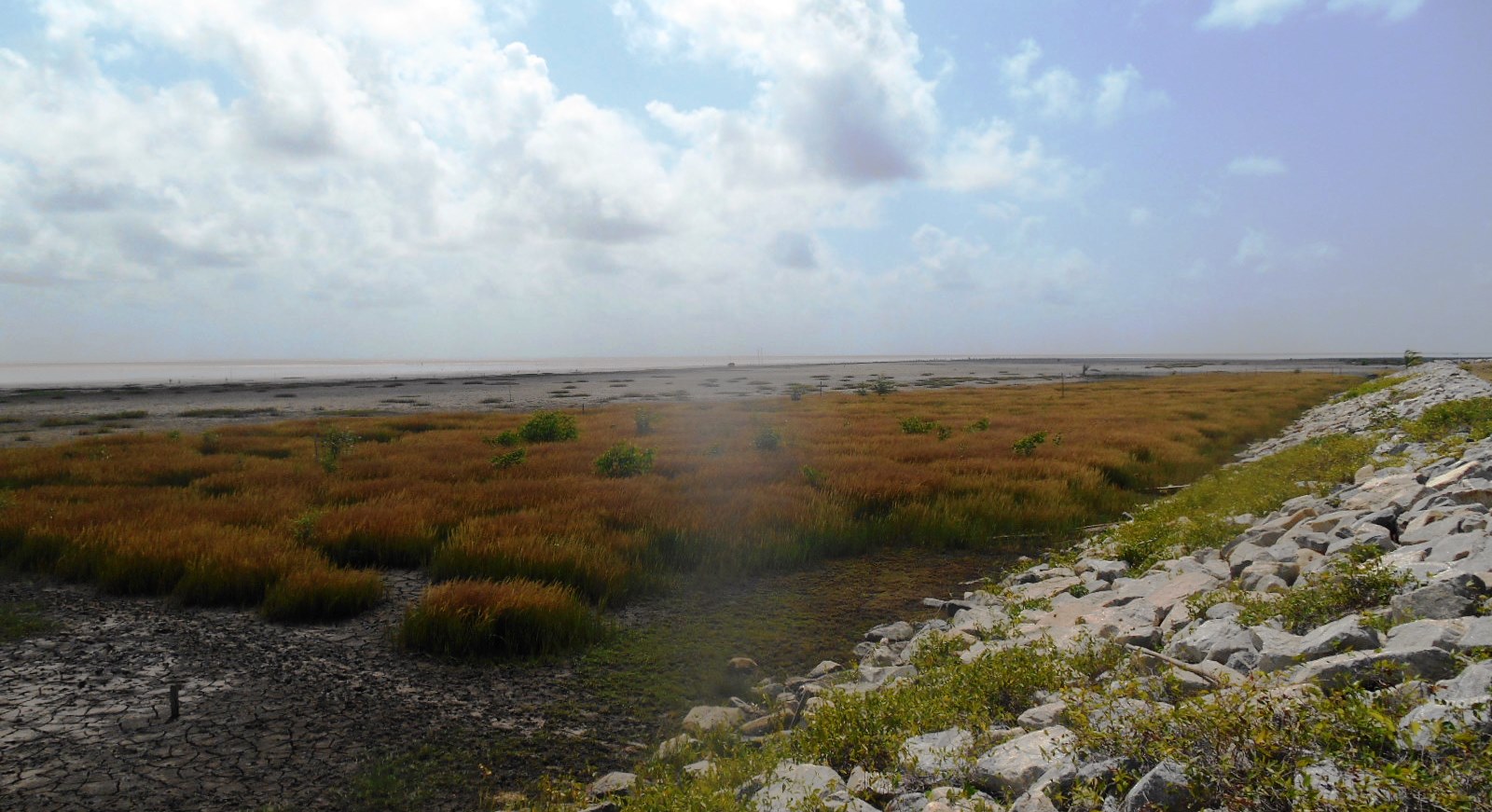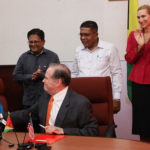Over twenty-five persons residing on the Essequibo Coast, Region Two are now equipped to help promote community based mangrove management as a sustainable means of mangrove restoration and management.
The National Agricultural Research and Extension Institute (NAREI) recently held a four-day Mangrove Ecology, Restoration and Management Workshop in Region Two. The workshop was funded by the World Wildlife Fund through the Education for Nature Program.
Workshop participants.
Participants of the workshop, including teachers, representatives of Neighborhood Democratic Councils, students of the Guyana School of Agriculture, fishermen, police and personnel of the Sea and River Defense Division, are likely to become members of Region Two’s Village Mangrove Action Committee (VMAC). These stakeholders were selected based on their current and potential influence to further promote mangrove protection and management.
Chief Executive Officer of NAREI Dr. Oudho Homenauth and Permanent Secretary George Jervis delivered remarks at the opening session of the workshop, which was held at the Anna Regina State House.
According to Dr. Homenauth, NAREI has implemented several interventions to restore mangroves along the Essequibo Coast. Works executed in several communities included successful mangrove seedling planting at Lima, construction of Bamboo Brushwood Dam at Walton Hall and Anna Regina, construction of geotextile tube groyne at Devonshire Castle and Spartina grass planting.
NAREI will be extending the 100 meters Bamboo Brushwood Dam completed in 2015 at Walton Hall by 150 meters. This infrastructure development will promote increase sedimentation, hence creating the conditions necessary for the restoration of mangroves, he added.
Developing sea defense, Region 2
He emphasized that communities need to take responsibility for their mangrove resources.
The involvement of youths in the workshop was praised by Mr. Jervis, who saw this as a promising sign for the sustainability of mangrove restoration in the Region. He encouraged participants to question the Project Officers about the interventions being made and provide their own inputs and recommendations.
This encouragement created an energetic atmosphere needed for an interactive workshop. Participants were divided into groups to allow involvement from everyone. Recognizing the importance of public education and awareness, participants noted the different avenues they would utilize to share information on the protection and restoration of mangroves. For instance, the teachers would utilize the Parent Teacher Associations to disseminate information.
The workshop focused on the ecology of mangroves and mangrove ecosystems; main species of mangroves found in Guyana; the range and biodiversity of mangrove communities found in Guyana; the natural and anthropogenic impacts on mangrove ecosystems; and appropriate conservation strategies that can be used to address impacts on mangrove ecosystems.
As a field exercise, the participants visited several areas such as Walton Hall, Devonshire Castle and Lima that benefited from restoration interventions. The tour enabled participants to have a better understanding of coastal erosion, the importance of mangroves for coastal defence and the different type of interventions being implemented by NAREI along the Essequibo coast







